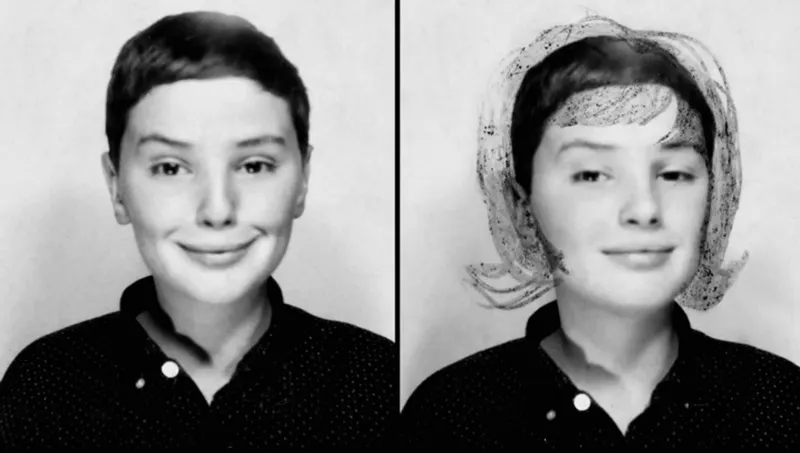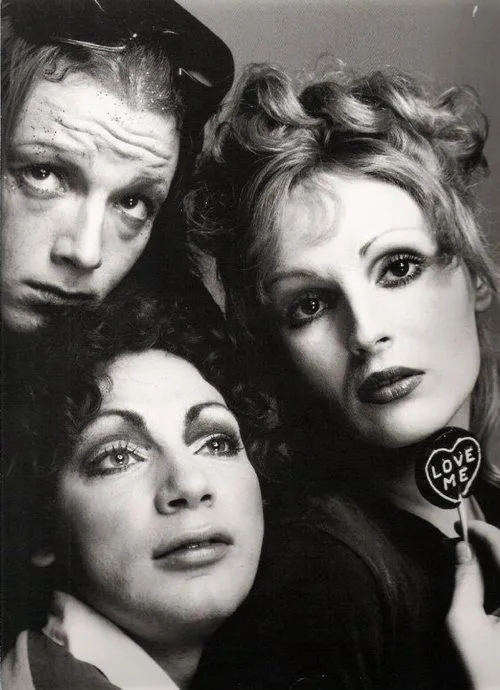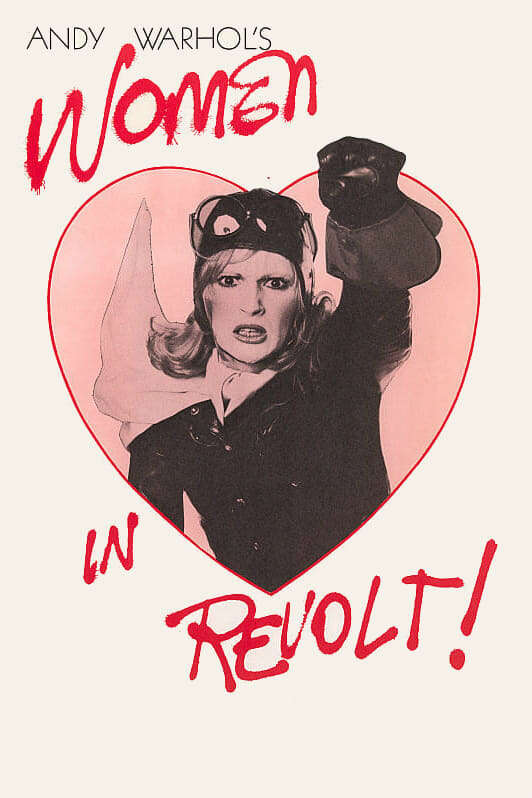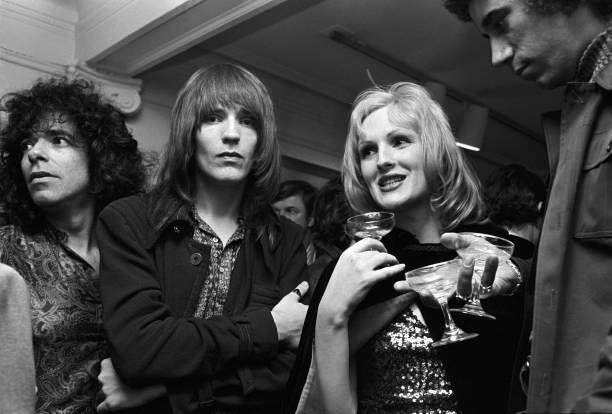
Who is the icon who introduced the world to Transsexuality? That would be Candy Darling.
Born In 1946 in Forest Hills, Queens, Candy Darling was an icon who didn’t know the impact she would have on the world!
During her school days, Candy grew up with an abusive father and a mother who was trying her best.
DISCLAIMER: The following quote from an April 2024 article uses Candy’s old name. Her birth name was James Slattery. She changed it to Candy when she left home at 16. Candy was her stage name but once she figured out her gender Identity, it became her legal name.

The family was living in Forest Hills, Queens, when James was born, on November 24, 1944. The Slatterys were not short on drama. Though the couple held down jobs—Terry as an office worker and, later, a bank teller, and Jim as a cashier for the New York Racing Association and a sometime bartender—and were eventually able to buy a house in North Merrick, on Long Island, the family’s emotional well-being was often rocked by Jim’s drinking, gambling, and violent rages, which were followed by the usual pleading and promises: Please don’t leave, I’ll be better. By 1957, Terry had had enough.
She divorced Jim and, with half the money from the sale of their home, got a place in suburban Massapequa Park, where Candy attended middle school. She was very soon a target. “He fit in with the girls,” one of Candy’s early friends told Carr. “He gravitated to them. And she was always picked on. S/He was very effeminate.” But what’s a girl to do? Especially if her inner self—her true self—bears no resemblance to the body, let alone the social constructs, she has to live with?
–The Warhol “Superstar” Candy Darling and the Fight to Be Seen by Hilton Als, The New Yorker, April 8, 2024
Her mid-century queer life was influenced by the movie stars like Kim Novak and Joan Bennett. Similar to queer and trans people of her generation, she learned to impersonate them and began cross-dressing after enrolling in Cosmetology School.
In 1961, she signed up for a course at the DeVern School of Cosmetology in Baldwin, Long Island.[7] Darling later said that she “learned about the mysteries of sex from a salesman in a local children’s shoe store” and finally revealed an inclination towards cross-dressing when her mother confronted her about local rumors, which described Darling as “dressing as a girl” and frequenting a local gay bar called The Hayloft. In response, Darling left the room and returned in feminine clothing. Darling’s mother would later say that, “I knew then… that I couldn’t stop [her]. Candy was just too beautiful and talented.”[8]
After coming out publicly, Darling would take a short cab ride to the Long Island Rail Road station, avoiding the attention of neighbors she would receive by walking to the train. From there, she would take the train to Manhattan, often sitting across from Long Island starlet Joey Heatherton.[2] In Manhattan, she would refer to her family home at 79 First Avenue in Massapequa Park as her “country house”, and spent time in Greenwich Village, meeting people through Seymour Levy on Bleecker Street.
Candy Darling, Category: Early Life, Wikipedia, Last Updated April 25, 2024
In the Summer of 1966, Candy met Jeremiah Newton. He was her confidant, her best friend, her executor and the person who was with her until the end. Her name before she was Candy was Hope Slattery.
Holly Woodlawn remembers that Darling’s name evolved from Hope Dahl to Candy Dahl, then to Candy Cane. Jeremiah Newton said she took the name “Candy” out of a love for sweets. In her autobiography, Woodlawn recalled that Darling had adopted the name because a friend of hers called her “darling” so often that it stuck.
Candy Darling, Category: Early Life, Wikipedia, Last Updated April 25, 2024

Speaking of Holly, in 1963, Candy was walking down the street in the village and Candy stopped a hustler from bothering Holly. They started talking and the rest is history!
One evening, Holly Woodlawn was hanging out with her friend Libra outside an ice cream parlour on the corner of Eighth Street and Sixth Avenue. Candy Darling was eating an ice cream cone when a hustler asked her for a cigarette. When she refused and then told the hustler to move because he was blocking her light, the hustler shoved the cone into Candy’s face. She stammered “in that affected Kim Novak whisper, ‘Well, I never … how could you?’” Holly started talking to her, they became friends and Holly started going over to her house on Long Island where Candy lived with her mother. (HW69)
Candy’s mother was “an obsessed movie fan” who idolized Joan Crawford and often wrote her fan mail. One room of their house had been turned into a library filled with stacks of fashion magazines. (HW67) Candy wasn’t yet living as a woman – just “a very pretty boy in makeup hiding behind dark sunglasses, his face peeking out of an upturned trench coat collar.” (HW69)
Candy Darling meets Holly Woodlawn, Timeline, WarholStars.com

The two became fast friends and collaborators. It was only a few short years later that Candy became familiar with the genderqueer artist and playwright Jackie Curtis. In 1967, she was given a role in Curtis’s play “Glamour, Glory, and Gold: The Life and Legend of Nola Noonan, Goddess and Star,”. Curtis became a fixture in Candy’s life.
Her allure was given its first real showcase by Jackie Curtis, a brilliant, messy queen a few years younger than Candy, who’d grown up on the Lower East Side. (His grandmother owned a bar on Second Avenue called Slugger Ann’s.) Frequenting the same social circles, Candy and Jackie began meeting up for late-night gab sessions in lousy diners, where Candy, wrapped in fake furs, would act out her favorite scenes from the movies she loved.
The twenty-year-old Jackie made a proposal: if Candy really wanted to be an actress, he would write a play for her, and he did. Titled “Glamour, Glory, and Gold: The Life and Legend of Nola Noonan, Goddess and Star,” it opened Off Off Broadway in 1967, and was about a young actress’s rise to stardom, and her fall. Candy didn’t have the lead role, but she got excellent notices—notices that failed to mention that she was a trans woman, because Candy had pushed for her gender identity to be kept secret; she wanted to be reviewed as a woman.
–The Warhol “Superstar” Candy Darling and the Fight to Be Seen by Hilton Als, The New Yorker, April 8, 2024
It was in this show that Andy Warhol discovered Candy. Warhol was invited by Curtis to come see the show and he enjoyed the performance so much that he gave Candy and Curtis a role in Paul Morrisey’s film Flesh.
In 1969, Candy auditioned for the role of the Titular Myra Breckenridge in the film adaptation of Gore Vidal’s iconic novel featuring a trans woman. She did not get the part. The role was given to Raquel Welch and she was destroyed by this.
Candy always believed that the next gig was going to be her big break. From “POPism”:
Candy suffered a big disappointment in ’69. In fact, she never got over it. As soon as the news that the movie of [Gore Vidal’s novel] “Myra Breckinridge” was going to be made appeared in the trade papers, Candy began writing letters to the studio and the producers and whoever else she could think of, telling them that she’d lived the complete life of Myra and that she knew even more about forties movies than Gore Vidal did. It was true. And they gave the part to Raquel Welch.
Poor Candy wrote begging them to please, please reconsider. . . . When she didn’t hear anything back, something changed with Candy—it wasn’t a change you would notice unless you knew her very well (after all, she was always giving some level of performance). But suddenly she had to face the fact that Hollywood had slammed the door on her. All her life she’d been rejected and rejected by everybody and everything, and all through it she’d held onto the fantasy that even if no place else in the world would take her in, that Hollywood would, because Hollywood was as unreal as she was; Hollywood would surely understand—somehow. So when she didn’t get the part of Myra and she saw that Hollywood didn’t want her, either, I saw her become bitter.
–The Warhol “Superstar” Candy Darling and the Fight to Be Seen by Hilton Als, The New Yorker, April 8, 2024
Candy became a fixture at Andy Warhol’s Factory in the late 60s. And her and Holly were so popular that they got name dropped in Lou Reed’s 1972 track “Walk on the wild Side” and they were featured in the music video,
Holly came from Miami, F-L-A
Hitchhiked her way across the U.S.A.
Plucked her eyebrows on the way
Shaved her legs and then he was a she
She says, “Hey babe, take a walk on the wild side”
Said, “Hey honey, take a walk on the wild side“This part of the song highlights themes of transformation and gender identity for Holly Woodlawn. The line “And then he was a she” suggests that Holly underwent gender reassignment or transition from being a male to becoming a female. It’s a concise way of expressing this shift to being transgender.
Candy came from out on the Island
In the backroom, she was everybody’s darling
But she never lost her head
Even when she was giving headThis section hints at Candy Darling’s humble beginnings on Long Island, and provides more than a hint about the kind of thing she didn’t mind doing to appeal to backstage visitors.
This song, along with Reed’s track “Candy Says,” by The Velvet Underground, “Citadel” by The Rolling Stones, and “Lola,” by “The Kinks” the world was introduced to the “underground” taboo of trans people. The way these songs made headlines because of their mentioning Transgender women just shows you the times that they were living in.
In 1972, Candy received her big break as the star of Andy Warhol’s satire film Women In Revolt which was a film excoriating the Women’s Lib movement and Valerie Solanas’s SCUM(The Society for Cutting Up Men) Manifesto. In 1968, Warhol was famously shot by Solanas because she believed Warhol. She felt like Warhol had undervalued her script while also conspiring to steal her work, specifically her play titled Up Your Ass.
The shooting put him up in the hospital for a while and he had major organ damage but this was his revenge. The following is the Synopsis for the movie. Also check out the poster below!

Candy is an aloof heiress caught in an unhappy relationship with her brother. Jackie is a virginal intellectual who believes women are oppressed in contemporary American society. And Holly is a nymphomaniac who has come to loathe men, despite her attraction to them. Together, they join a militant feminist group, P.I.G. (Politically Involved Girls), but their newfound liberation doesn’t make them any happier.
Women In Revolt, Letterboxd
Candy really did struggle a lot with dysphoria. One journal entry she wrote I took down because of how raw it was. (I read her Biography back in May! so incredible)
I was always and still am, to many who knew me, Family, schoolmates, friends, an inferior and inadequate person in a second class position. That is not to say that I was not able to draw affection and even respect. But the affection was mingled with sympathy. The respect was given me because of my aloofness. I feel like I’m living in a prison. There are so many things I may not experience. I cannot go swimming, can’t visit relatives, can’t go out without makeup, can’t wear certain clothes, can’t have a boyfriend, can’t have a job, I see so much of life I cannot have”
Candy Darling: Dreamer, Icon, Superstar by Cynthia Carr, 2024 (Farrar, Straus & Giroux)
Candy was not wealthy. She was unhoused and this means her hormone treatments were less than ideal. Warhol treated her by giving her money to help her. In 1974, the actress and Icon died at the young age of 29. Diagnosed with Lymphoma because the treatment for dysphoria was too carcinogenic, Candy was such an incredible person and I was happy to share it with you!
“Her life was not boring, but poverty and illness are boring.”
It was the hormones that most likely resulted in Candy’s cancer diagnosis and, ultimately, her death.
“I wish I could have seen a death certificate. According to Jeremiah, the doctor said it was lymphoma. Jeremiah also said that she’d been taking hormones that were later found to be carcinogenic and were taken off the market. I spent probably too much time trying to corroborate that,” Carr says. “What hormones were people taking in the early ’70s? Which one (or more) were taken off the market? I read a book on trans medicine, talked to a couple of doctors and combed through the internet, but we’re talking about a drug that would have been recalled almost 50 years ago. I never managed to figure it out. But, yes, it was the consensus at the time that hormones had caused her cancer.”
Though hormone therapy and gender-affirming healthcare have improved, the conditions in which trans people live in this country, and the violence they face, both from individuals and their own government, are still dire.
50 years after Candy Darling’s death, Warhol superstar’s struggle as a trans actress still resonates by Jessica Ferri, LA Times, March 18, 2024

Her family, who was cruel to her in her living days came to push people like Jeremiah Newton away when she was dying. Her mother especially was cruel to Mr. Newton. After her death, Candy’s family was very involved in her funeral, anyone dressed up in drag was immediately turned away. Bob Colacello mentioned walking into Frank Campbell Funeral Home and seeing someone in a suit in a ponytail and it was Holly Woodlawn. She had been told not to come in a dress and so she obeyed the rule. Meanwhile Candy’s father fought over the fact that the mass cards had her chosen name on them and he demanded to have them reprint it. but the Funeral Director actually placed it in the front and while the family wasn’t looking he switched it back for one that said Candy. The wake was attended by many people. Julie Newmar gave the eulogy. One thing about the wake part that messed me up was
The saddest story from the book is how she put her will and last wishes in a diary in her childhood bedroom. She had paid for everything. And left this missive for all of her loved ones.
In a letter written on her deathbed and intended for her friends at the Factory, including Warhol, Darling wrote, “Unfortunately before my death I had no desire left for life … I am just so bored by everything. You might say bored to death. Did you know I couldn’t last. I always knew it. I wish I could meet you all again.”[18]
–Candy Darling, Category: Illness and Death, Wikipedia, Last Updated April 25, 2024

Please if you haven’t read Cynthia Carr’s incredible book, please do! Click the cover art to order a copy!!
As I close out today’s post I wanted to pay special memorial to Jeremiah Newton. There was news that broke in November of 2023 that Jeremiah passed away. He was fighting tooth and nail to push Candy’s story out into the world! Check out this post by Hilton Als on Instagram! Rest in Peace Mr. Newton!